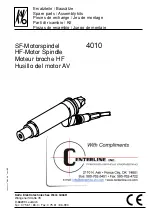
4a. Single pole wiring:
Twist the existing wires
together with the wire leads
on the CD-250 sensor as
indicated below. Cap them
securely using the wire nuts
provided (See Fig 4a).
• Connect the green or
non-insulated (copper)
GROUND wire from the
circuit to the green wire on
the CD-250.
• Connect the NEUTRAL wire
from the circuit and from
the lamp (LOAD) to the
white wire on the CD-250.
• Connect the power wire
from the circuit box (HOT)
to the black wire on the
CD-250.
• Connect the power wire to
the lamp (LOAD) to the red wire on
the CD-250.
• Cap the yellow wire on the CD-250. It
is not used in single pole applications.
NEUTRAL
GROUND
LOAD/Common
(power to lamp)
NEUTRAL
GROUND
HOT/Common
(power from circuit box)
TRAVELER
TRAVELER
Lamp/load
MASTER SWITCH
AUXILIARY SWITCH
Fig. 2a: Typical 3-way Switch Wiring
3. Prepare the Wires.
Tag the wires currently connected to the
existing switch so that they can be identifi ed
later. Disconnect the wires. Make sure the
insulation is stripped off of the wires to expose
their copper cores to the length indicated by the
“Strip Gage,” in Fig. 3. (approx. 1/2 inch).
For your safety: Connecting a proper ground to the sensor
provides protection against electrical shock in the event of certain
fault conditions. If a proper ground is not available, consult with
a qualifi ed electrician before continuing installation.
Strip Gage
1/2"
12.7 mm
Fig. 3: Wire Stripping
Green
->
GROUND
Black
->
HOT (power
from circuit box)
White
->
NEUTRAL
Red
->
LOAD (power
to dimmable lamp)
Yellow
->
CAP (Traveler,
not
used
for
single
pole)
Industry standard
switch cover plate
(not provided)
Fig. 4a: Sensor orientation, single pole
wire connections and wall box
assembly
























